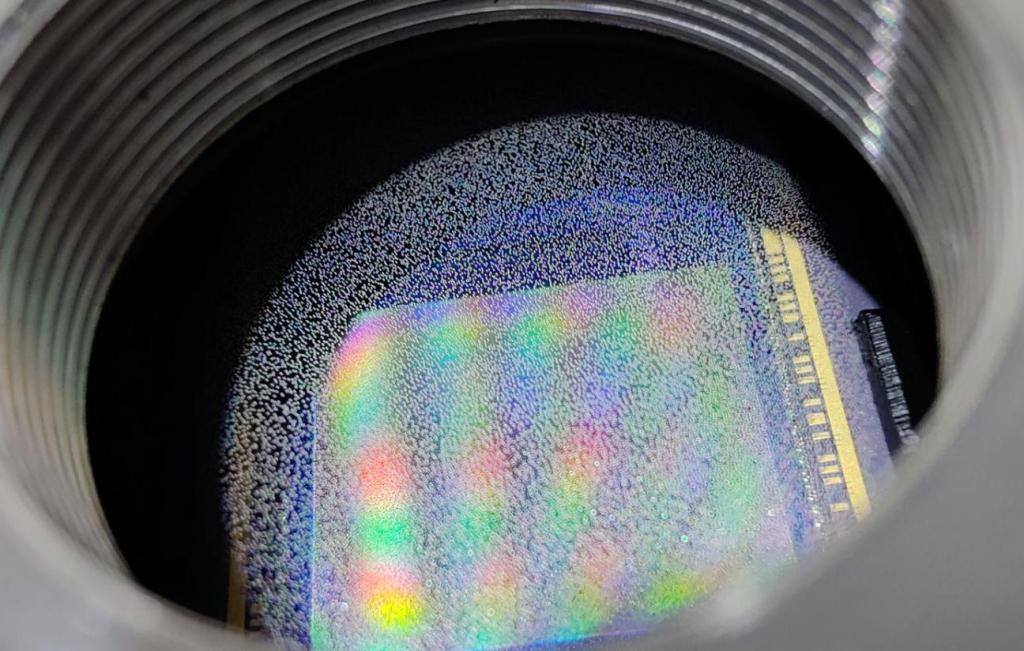Using a CCD makes total sense to me. Here is my 2 cents.
CCD sensors are not inherently more sensitive to IR, per se. The structure has numerous advantages for this extremely niche yet astoundingly demanding application.
-Linearity
Due to the readout structure of CCDs, the linearity is 100% and data is 100% truthful.
sCMOS sensors feature an amplifier for each photosite, which means when a readout occurs, there are inherent non-linearity issues.
The best sCMOS sensors claim >99.7%, which amazing, what does the 0.3% entail, and now, that is 0.3% for each pixel. 3200MP would give around 10 error pixels. (edit: this is incorrect, I will fix it in a moment.) Bad point, I was mistaken.
Alright, different manufactures use different standards and methods to measure nonlinearity. Regardless, a CMOS camera will come with some inherent nonlinearity while the best CCDs will not. There are many situations where CCDs will yield a nonlinear output, so claiming it is strictly 100% is not correct. Typical sCMOS cameras use two 11-bit readout amplifiers, resulting in 16 bits, this in itself causes some nonlinearity. High end cameras use a single readout amplifier to improve linearity.
Considering the cost of this thing, the errors could just be critical.
CCDs utilise a single readout amplifier. Think of this as photos queuing for a gate versus each photon being assigned a value and read out as an electric signal. Yes -- CCDs are a lot slower because of this.
-Electron multiplication (EM-CCD)
Using the avalanche effect, CCDs can be boosted to yield extreme sensitivity when light is low. Even though the boosting comes with inherent electron multiplication noise, CCDs are linear, and such noise is also linear. This makes it easy to cancel out in post signal processing. EM-CCDs use a frame transfer structure where the signals are stored for readout, situated below the detection area, this overcomes the inherent slowness but they are indeed still slower than sCMOS counterparts, which reach 100FPS easily at more than 30 times the resolution. Andor practically owns the EM-CCD market (90% as of 2017), which leaves other companies to innovate in sCMOS technology to compete. The EM-CCD is irreplaceable when light is very low, at below 4 photons per pixel, there is just no other choice. Most applications have plentiful photons to spare.
-Cooling
IR is a long wavelength and comes with heat. Long exposure generates a lot of dark current. It is typical for a CCD sensor to be cooled to -70C (Andor does -100C!!!) which lowers dark current drastically. Such levels of cooling could be problematic for CMOS. I have never looked into this, but I can imagine the nonlinearity becoming a nuisance since different cooling levels correspond to slightly different readouts. One would have to calibrate for each temperature. All the SWIR cameras use CCDs.
Read noise is higher on CCD cameras, but just like readout, the noise is also linear! Since they will be doing longer exposures, I do not think readout noise is as important as the top two of my list above. The third one really is an added bonus.
Inevitably, someone may ask "so why can't Sony/Canon/Nikon offer cooled CMOS/EM-CCD".
- EM-CCDs top out a 1 megapixel. Yeah. I am sure we need more "but my bigmi 917XSProPlusAI++QuintupleCam does 500 megapixels" type remarks.
- For cooling to work, the sensor is situated in a sealed chamber. With people complaining that a Z3 is heavy, this will not bode well.
- The chamber becomes leaky over time. When cooling is on, humidity laden air manifests itself as condensation. The desiccants inside the chamber must be replaced every 2 years or so. See below:
"Fix Your Andor Zyla with Four COVID-19 RATs" (Not clickbait.)
https://macrocosmosblog.wordpress.com/2022/07/09/fix-your-andor-zyla-with-four-covid-19-rats/ 
I cannot think of a single consumer company that would want to deal with this conundrum.
EM-CCDs typically use a hermetically sealed enclosure that is extremely expensive to do correctly.
"Turn cooling off!" -- Why have it in the first place then?
Additionally, the kind of electronics to cool such massive sensors... yeah.

- Cost: See above. Labour to fix that leaky box is not free.